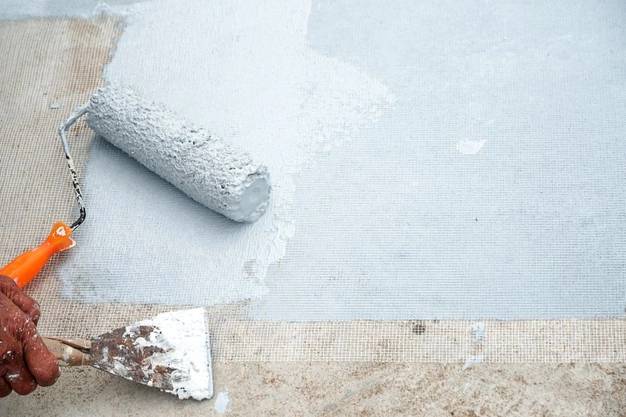At its core, a home is shelter. It keeps us dry during a storm, warm when it’s cold, and shaded from the sun. Its outdoor areas, on the other hand, often show just what it means to be protected from the elements. Siding that’s pelted by rain or snow can dull over time, just as decks and patios can warp and splinter. Furniture and planters follow suit, and soon a backyard can be the most forgotten space of a home.
Now that the hot days of summer have given way to sweater weather, it’s the ideal time to give your exterior some TLC. And since most of these weather-worn issues can be solved with a fresh coat of paint, it’s important to pick the right one.
“Exterior paints are formulated to handle outside weather, mildew, chipping, and fading,” says Julia Buerger, merchant of spray paint, exterior paint, and primers for The Home Depot. “Exterior latex-based paints will also give consumers the longest durability, as they’re formulated to expand in warm weather and contract in cool weather, preventing cracking or peeling.”
How to Prep and Maintain Outdoor Surfaces
As with any paint project, Buerger says that it’s important to prepare all surfaces ahead of applying a brush stroke. Not only will this allow the paint to adhere more easily to the item—whether it’s the wood surface of a deck or the curves of metal furniture—but it will make the coat last longer. Follow her three tips to get started, and one tip for maintaining the job once it’s finished:
Work in the right climate. “In temperatures colder than 50 degrees, the paint will take longer to dry,” she notes. “In warm temperatures, the paint may dry too fast, causing lap marks. Wind, rain, and humidity can also affect the drying time and final appearance.”
Get the surface ready. “Make sure to prepare the surface before painting by cleaning, sanding, and priming the materials as needed,” Buerger says.
Don’t forget about primer. “Apply a coat of primer before painting,” she says. “This is the base coat for paint, and it smooths out the surface and helps with paint adhesion.”
Get in a cleaning routine. “To keep the paint job looking fresh, hose off dirt, leaves, and rainwater that accumulates over time,” she adds. “It’s also helpful to pressure wash the home’s exterior about once every five years to keep mildew at bay.”
How to Choose the Right Outdoor Paint for Your Project
Painting a deck or patio: If you’re looking to refresh a wood deck or patio with a coat of paint, Buerger recommends using a 100 percent acrylic latex paint for the best weather-resistant coverage and protection from foot traffic. “This type of paint typically contains a higher resin content, which is the chemical compound that supports adhesion to the painted surface,” she says.
Painting a front door: Since this is a surface that will get daily use, Buerger advises using a paint that has a high-gloss finish. “It can withstand nicks, add shine, and highlight architectural details,” she notes.
Painting a pool: Did your pool see a lot of splashes this summer? The right paint to repair a typical concrete pool is “a polymerized cement-based product,” Buerger notes, because it can handle the seasons in between next summer’s splashes. “You’ll also want to make sure to use paints that provide stain and abrasion resistance,” she adds.
Painting outdoor furniture: This solution is slightly more complicated, because the right type of paint depends on the furniture material. “If the furniture is metal, then an oil-based exterior paint will be most effective in preventing rust,” she says. “For wooden and wicker furniture, a latex-based exterior spray paint will give you smooth and even paint coverage.”
Painting planters: Completing this project, Buerger says, depends on the type of look you have in mind. “If you’re wanting a more detailed design, then you’ll want to use an exterior acrylic latex paint and a brush,” she says. “For full-coverage of one paint color, an exterior acrylic latex spray paint is a good, quick option.”

